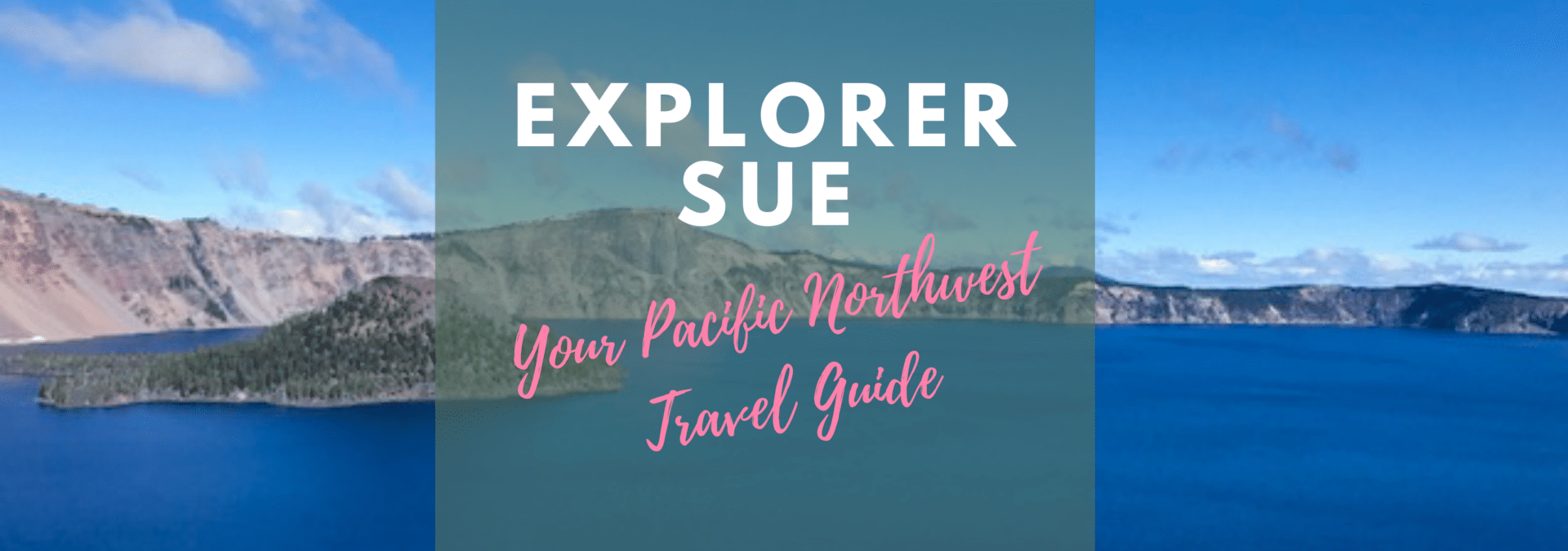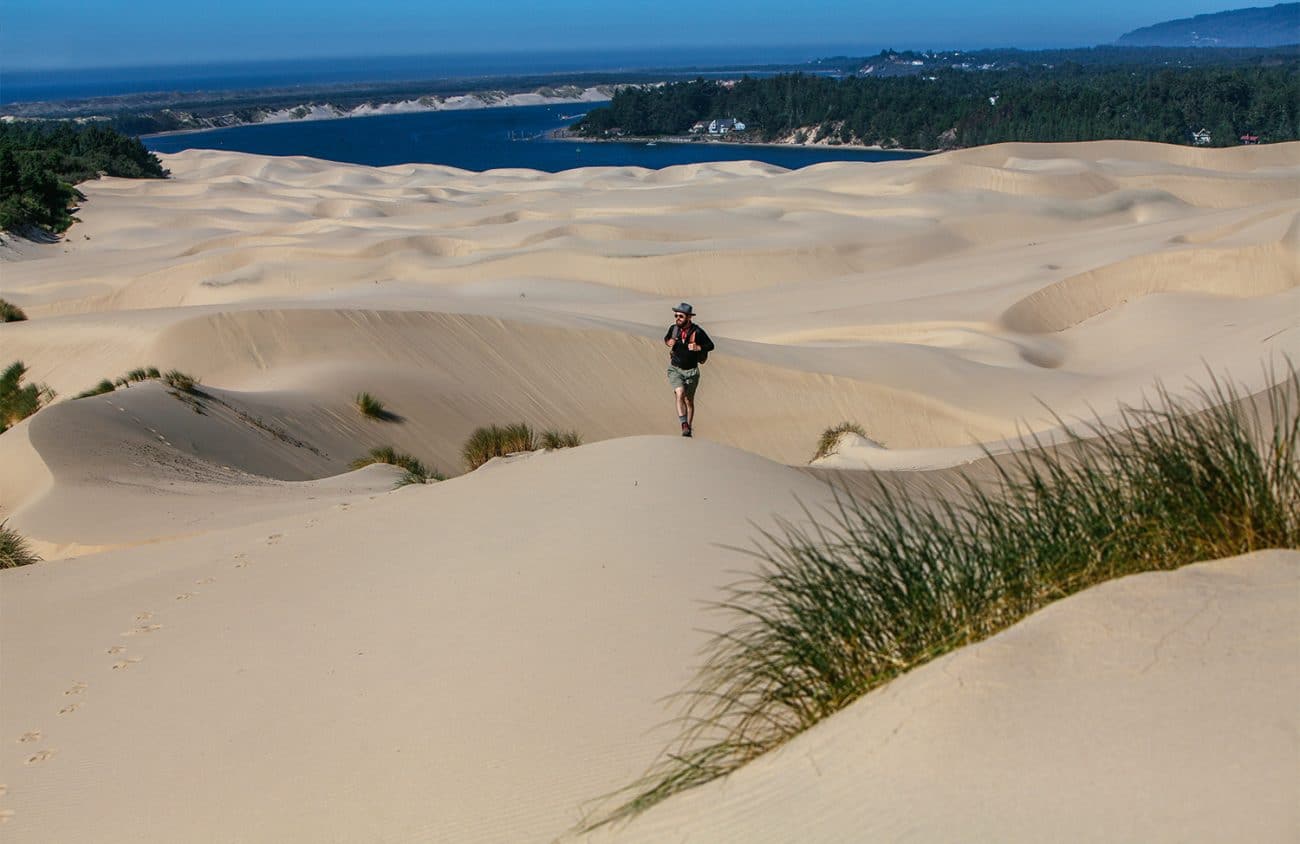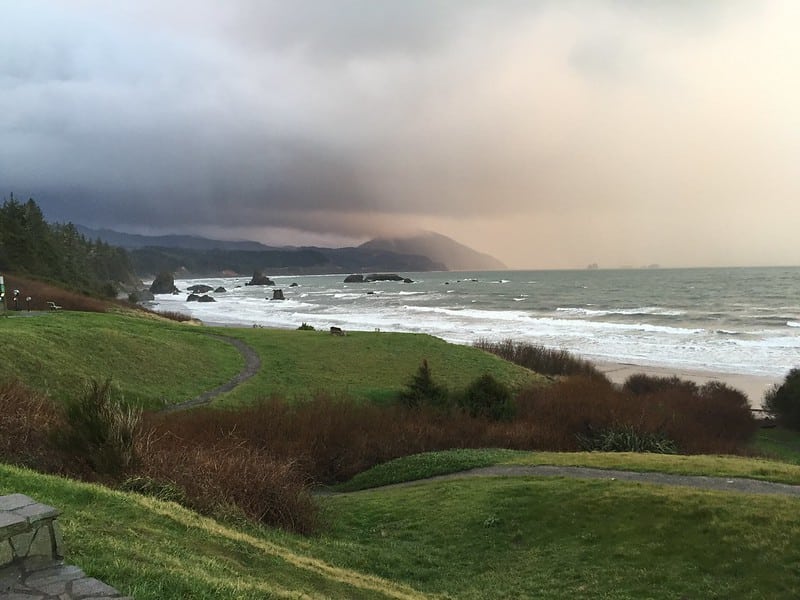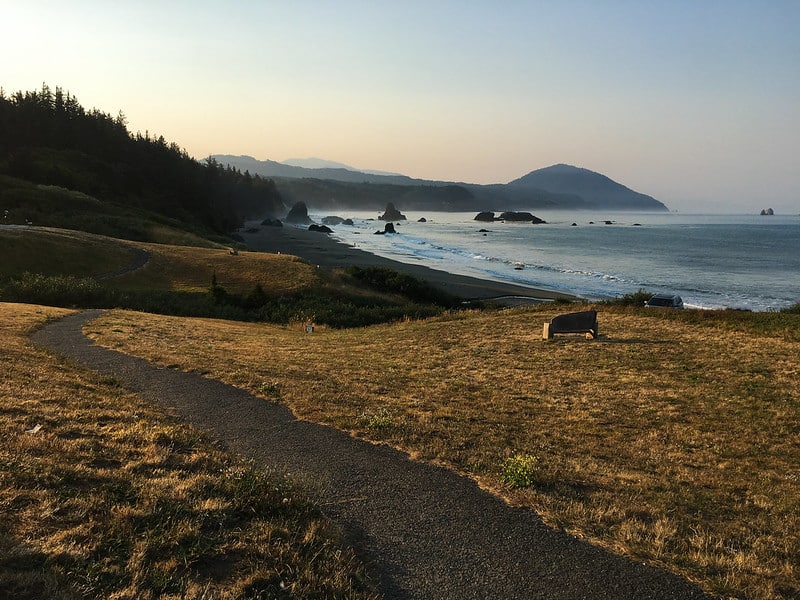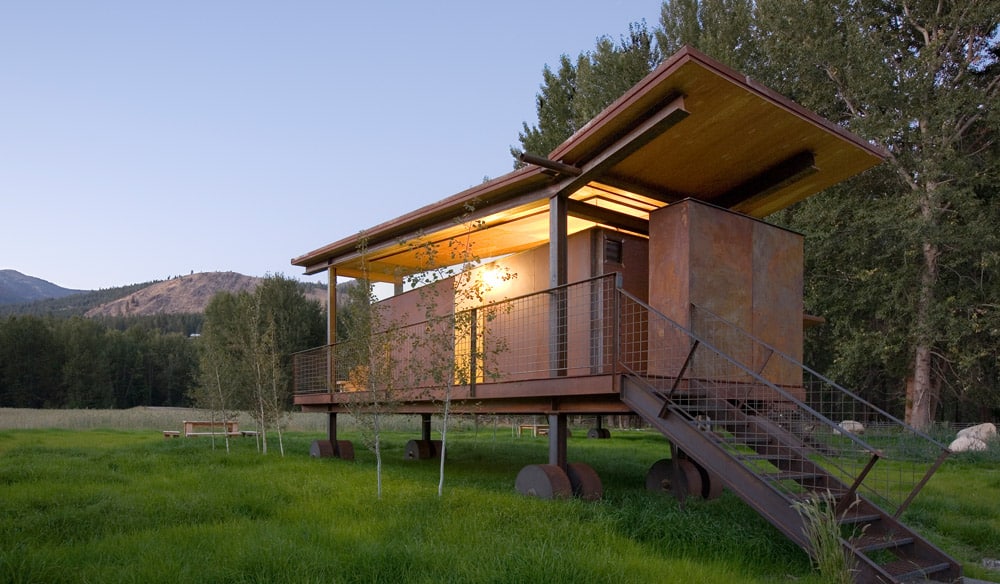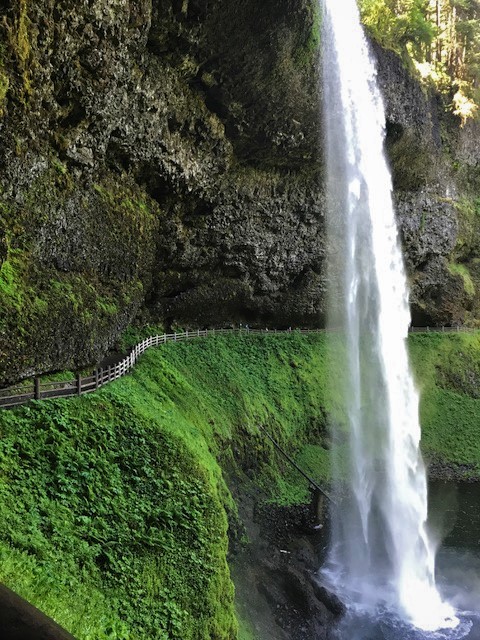This article was written by my good friend John Schoppert, who lives in Southern Oregon and intimately knows the Southern Oregon Coast.
Dropping over the edge of 50 floors of a sand dune precipice onto a hair-raising incline is no laughing matter. Or is it? Outside of Florence, Oregon, on the southern Oregon coast, is the Oregon Dunes National Recreation Area where dune buggies, sandboarders, and all-terrain vehicles (ATVs) pitch over cliffs of wind-blown peaks of sand dune mountains. Not only is this other-worldly terrain an ever-changing landscape due to wind, sand, and water, but it was also an inspiration for a seminal science fiction novel and later, an engulfing David Lynch film.
The Southern Oregon Coast
But first, let’s start safely at the bottom. A Southern Oregon coast road trip is as varied and exciting as the much-ballyhooed middle and northern Oregon coasts. Those coasts, while spectacularly dramatic, receive more visitors because of the accessibility from the urban core of Portland. The Southern Oregon coast easily rivals the north in landscapes, hikes, and also has redwood groves. It includes one of America’s great scenic rivers, The mighty Rogue Wild and Scenic River.
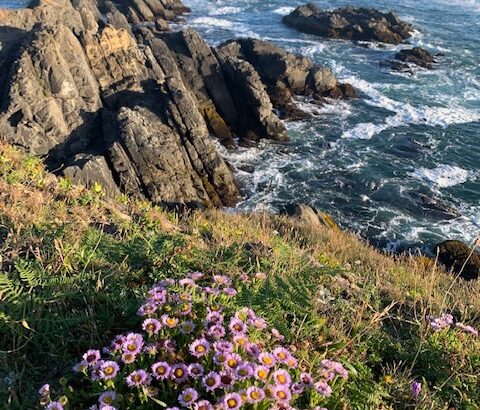
Southern Oregon Coastal Towns: The Gateway to Wonderful Beginnings
Starting from Ashland, Medford, and up through Grants Pass, your entry to the southern Oregon coast is Highway 199 which passes California’s Jedidiah Smith Redwood Grove and toes briefly towards Crescent City (take the cut-off to Smith River to save time), and heads back north into Brookings, Oregon.
Brookings begins the bounty of craggy and jutting coastal overlooks on the Oregon southern coast. But if you’re looking for things to do in Brookings, Oregon, for starters, hidden inside downtown Brookings is Chetco Point Park, perfect for a post-hotel check-in and after-arrival pint and nosh. An easy short hike that overlooks Guano and Walrus Rocks (lots of one, none of the other), Chetco Point is a perfect way to unwind and shake off the road screws in your tight travel joints. When you’ve rejuvenated from a night’s sleep, Brookings offers more startling hikes within an easy drive from downtown.
Easing into the Adventure
Alfred Loeb State Park (the “Loeb” to locals) is a short easy hike that follows the Chetco River and offers an abundance of Myrtlewood trees, owls, osprey, and during the fall and winter, salmon and steelhead runs. Just south of Brookings is the exquisitely serene Oregon Redwoods Trail. This northernmost stand of old-growth redwoods, while not as overwhelmingly majestic (and thus overrun) as the lower California groves and their utter abundance and girth, makes up for that with its relaxing after-care.
A walk through this grove allows you to feel secure in the redwoods, coupled in solitude with nature, because you usually will be one of the few on the trail. This is certainly because it’s off the beaten path of the more easily accessible ocean-facing stops. Yet, a grove of redwoods not overrun is worth a two-hour respite from the rush and mush of Oregon coastal hikes. Another plus? If the coast is foggy or overcast, an inland drive of four miles can result in warmer clear blue skies amongst the towering trees.
Northward to Snapshots and Slipknots
Heading north from Brookings you pass over the Thomas Creek Bridge, Oregon’s tallest bridge at 345 feet, within the Boardman State Scenic Corridor. Boardman contains several roadside stops, Natural Bridge, House Rock, and Arch Rock which has accessible picnic benches for lunch. All the Boardman sites are photoworthy. But Cape Ferrelo has the added advantage of a mile-long loop hike buffer that shrugs off the park-and-snap crowd. The view at the edge of the cape, like most Oregon coast hikes, is spectacular. While wildflowers are abundant in Spring, whales slinking past and waves crashing onto outcroppings fill the other seasons.
Cape Sebastian is one of those Oregon cape hikes that’s a choose-your-own-adventure destination. Blustery or benign but always beautiful, you can either relax on the bluff looking off to the ocean’s distance for whales and dolphins and seabirds or take the occasionally squeamishly steep trail down to the “secret” beach. That leg requires using a provided secured rope for the final ascent onto the beach. The rewards are bountiful with either path you choose.
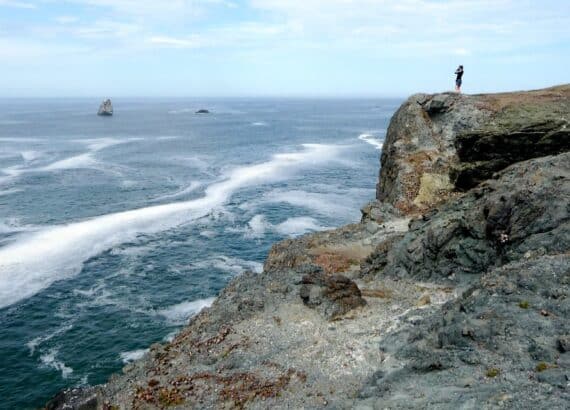
Gold Beach and the mouth of Rogue River
The Art Deco bridge (with Art Moderne reliefs) in Gold Beach, officially known as the Isaac Patterson Bridge, but as everyone calls it, the Rogue River Bridge, spans the mouth of one of America’s great rivers, the wild and scenic Rogue River. Arguably, the Rogue is one of the greatest rafting excursion rivers anywhere with some of the wildest whitewater runs in America. With a complete flow of over 215 miles beginning in the high Cascade Range, the Rogue offers an abundance of watery adventures.
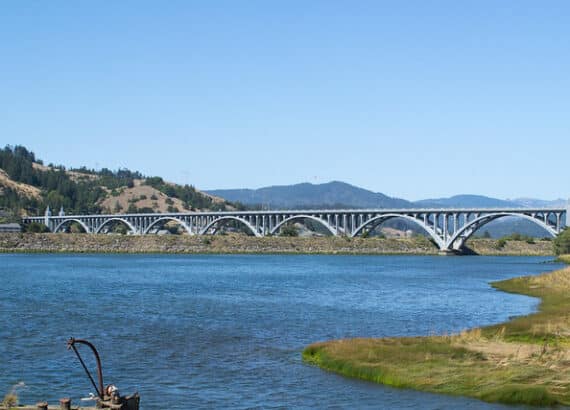
Thirty-three miles between Grants Pass and the coast are designated as Wild and Scenic and thus only accessible by non-motorized watercraft with limited daily user permits. Jet boat tours are available above the wild section out of Grants Pass which notably passes through the Hellgate Canyon section. But more importantly for this writing, jet boat tours leave from Gold Beach and offer up to 104-mile round-trip tours of the lower Rogue River up to Agness, Oregon. All of these options are worthwhile to explore and can fit into any number of your adventure travel options.
The Western Most Settlement in Oregon
Like Brookings’ somewhat hidden Chetco State Park, don’t miss the Port Orford Heads State Park on the ocean side of downtown Port Orford, the westernmost settlement of Oregon. Many rush past this curve on Hwy 101 without realizing what’s hidden beyond downtown. Trailheads that reach as far as the Cape Blanco Lighthouse begin here. Not to mention, sea lions sunning themselves on the rocks and access to prime bird-watching spots. This beautiful state park is far less crowded because it’s hidden behind the small downtown of Port Orford.
These embedded downtown oceanside state parks are less crowded because most travelers won’t negotiate the few city blocks to discover them. Instead, most tourists turn in to the seaside capes or roadside parks with ready access and sometimes sufficient parking lots. They do fill up fast! Of course, there’s good reason for those point-and-pee parking lots, but often, just a small detour to hidden coastal city-side state parks pays big dividends by the lack of crowds and the still stunning viewpoints. Another great feature, instead of just pull-over parking lots, state parks like Port Orford Heads State Park often have information centers with knowledgeable local volunteers, historical artifacts, and clean bathrooms.
Cape Blanco, Oregon’s Western Edge
From the westernmost settlement of Port Orford to the westernmost point in Oregon, Cape Blanco State Park is a high-line drive with spectacular vistas. A stop at Cape Blanco’s easy yet blustery hikes is essential to any Southern Oregon coast road trip. Cape Blanco has a lot to offer the coastal traveler, including RVers, with electrical hook-ups, rental cabins, a horse camp, and spectacular hikes. These sometimes blustery trails include the Cape Blanco Lighthouse loop, which leads to a lower trail to the cape’s beach. But before dropping to the beach, stop. Do the lighthouse tour and take in the astounding vista of Oregon’s oceanic edge. Besides, you’ll want to escape the wind at that point, and breathe.
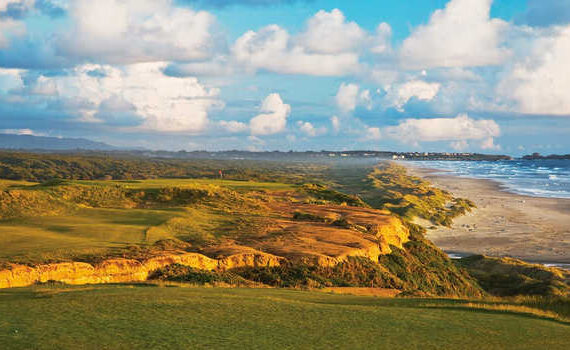
Feel Scotland in Your Stroke
The coastal resort town of Bandon houses Oregon’s original links golf course. Designed according to traditional links standards, Bandon Dunes is a stunning seaside golf resort that has grown in size and stature. Often compared to Monterey’s Pebble Beach, Bandon Dunes offers golfers challenging terrain, dense gorse, and towering dunes. If your jam is a few days of frustration followed by exquisite accommodations, then make this a destination to relieve your stress.
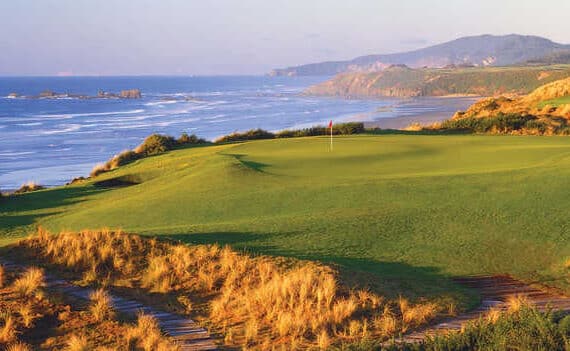
Chaos in Coos Bay Not to be Missed
Fear not if you’re traveling the southern coast and a storm is on the horizon. Get yourself to one of the most stunning natural acrobats on display. But be careful. This act is truly death-defying! Booming waves and a crashing shore break compel thrill seekers to take the short turn off of Hwy 101 to Shore Acres State Park which is just south of Coos Bay. Once in the park, head to Simpson Beach. If a storm watch has been announced, just follow the locals and photographers to the viewpoint. There will be traffic. This incredible event is not to be missed, so deal with the crowds. No matter how strong or quick you think you may be, heed the warnings to stay on the path. Deaths do happen in an instant. At the viewpoint, as the storm rushes in, you will soon feel a deep-in-your-chest pressurized release as waves crash hard against outcroppings and thrust up orgasmic towering plumes of foam and water. Wearing slickers is advised.
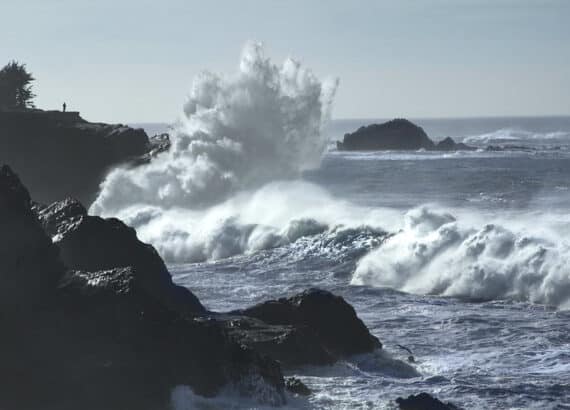
Otherworldly Oregon: Endless Dunes, Off-road buggies, and a Frank Herbert Dream
Sand will get into your shoes, but you won’t care. Adventuring within the Oregon Dunes National Recreation Area and the surrounding environs will make that almost impossible to avoid. The Oregon Dunes is the largest expanse of coastal sand dunes in North America, stretching over 42 miles from south of Florence. You will be amazed by the landscape; waiting for you are vast distances of sands, deep dunes, and sensory disorientation, all of which inspired Frank Herbert to write the seminal science fiction novel, Dune, based on the area’s moving sand dunes.
If thrill is your chill, you can hitch a ride with various dune bus operators who expertly drop you off cliffs into deep sand crevasses, shoot you back up over the lips, maybe catch a glimpse of the ocean, only to plunge you back down again. It’s an out-of-this-world adventure that you would never expect from the often-forested coastal realm of Oregon. Your kids will love you for this riff on the coastal road trip.
Lagniappes: If you’re foot-hardy consider the various legs of the Oregon Coast Trail.
